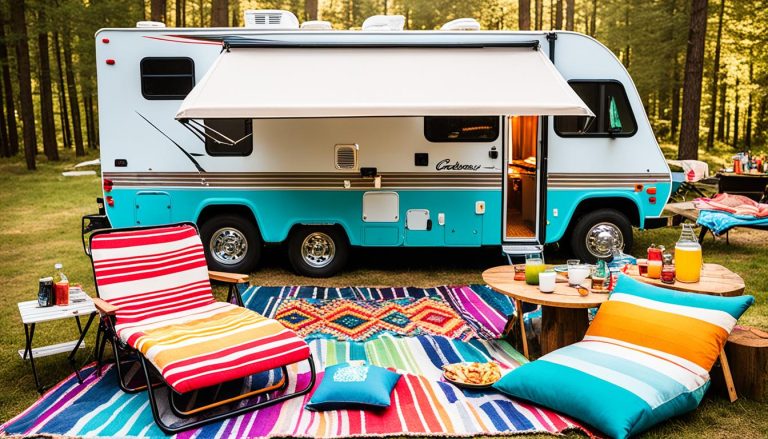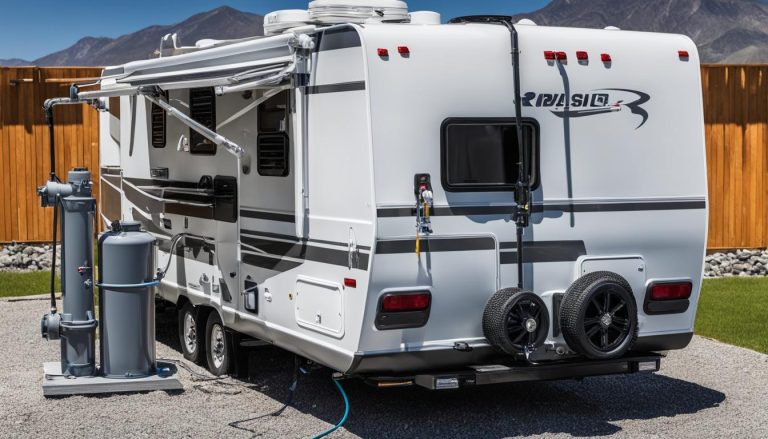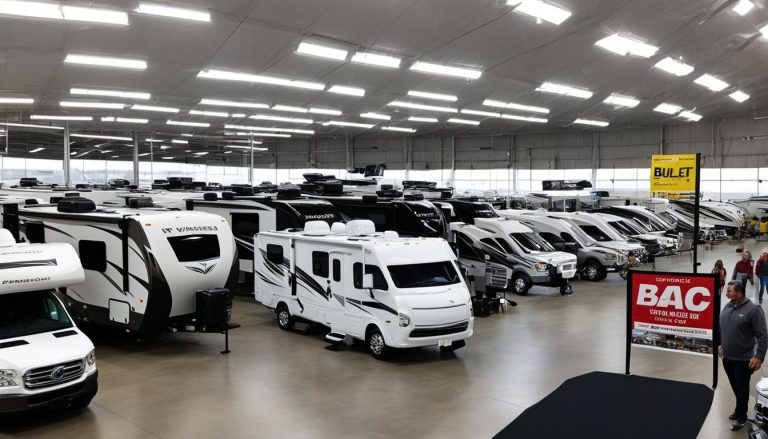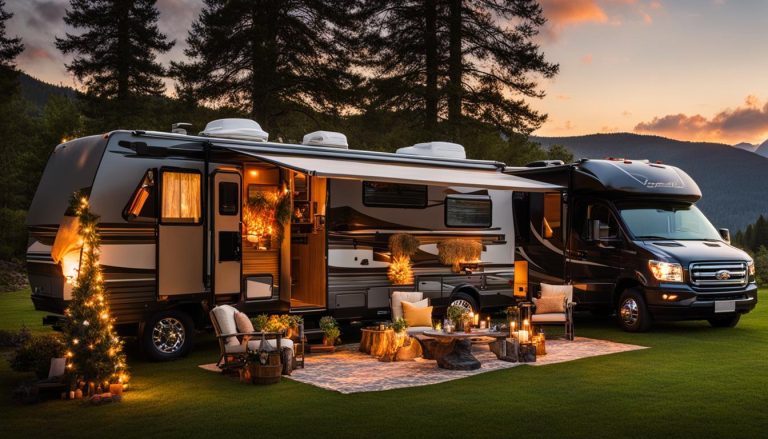Discover What Is RV Antifreeze & Its Uses
gorvlifestyle.com and its partners may earn a commission if you purchase a product through one of our links
If you’re an RV owner, you know the importance of protecting your beloved vehicle from freezing temperatures. That’s where RV antifreeze comes in. But what exactly is RV antifreeze and how does it work? In this guide, we’ll dive into the world of RV antifreeze, exploring its uses, benefits, and everything you need to know to keep your RV’s plumbing system safe during the colder months.
Key Takeaways:
- RV antifreeze is essential for winterizing an RV and protecting the plumbing system from freezing temperatures.
- Most RV antifreeze solutions are either ethanol or propylene glycol-based, with the latter being the more common and preferred choice.
- RV antifreeze is non-toxic and safe for RV plumbing systems and holding tanks but should be handled with care and properly disposed of.
- When choosing RV antifreeze, consider opting for propylene glycol-based solutions for better protection and minimal taste or smell.
- To winterize your RV using antifreeze, follow manufacturer guidelines and use the appropriate amount based on the size of your RV.
What Is RV Antifreeze?
RV antifreeze is a liquid solution with a lower freezing point than water. It serves a crucial role in protecting the plumbing system of an RV from freezing temperatures. When the temperature drops, ordinary water in the plumbing lines can freeze and expand, leading to potential damage to the pipes. RV antifreeze replaces the water in the system, preventing freezing and ensuring the smooth operation of the plumbing.
RV antifreeze comes in various colors, but the most common color is pink. It is notable for its ability to resist freezing even in extremely low temperatures, making it a reliable choice for winterizing an RV. By using antifreeze, you can eliminate the risk of costly repairs caused by frozen and burst pipes.
There are two main types of RV antifreeze:
- Ethanol-based antifreeze
- Propylene glycol-based antifreeze
Ethanol-based antifreeze is less expensive compared to propylene glycol-based antifreeze, but it is not as commonly used. On the other hand, propylene glycol-based antifreeze is the preferred choice for most RV owners due to its non-toxic nature and better protection for the plumbing system. This type of antifreeze is considered safer and provides superior freeze protection.
RV antifreeze is an essential component of the winterization process for RVs. By understanding its purpose and choosing the right type, you can ensure the longevity and reliability of your RV’s plumbing system.
Is RV Antifreeze Toxic?
RV antifreeze is generally non-toxic and safe for RV plumbing systems and holding tanks. However, it is important to choose the proper antifreeze and handle it with care.
Propylene glycol-based RV antifreeze is a non-toxic solution that is considered safe for humans.
When de-winterizing your RV, it is crucial to fully flush and sanitize the fresh water system to ensure no antifreeze remains. While RV antifreeze is non-toxic for humans, it can be toxic to animals, especially cats, if consumed in large quantities. It is recommended to keep pets away from antifreeze and seek immediate veterinary attention if ingestion occurs.
RV Antifreeze Toxicity Precautions:
- Choose propylene glycol-based RV antifreeze, which is non-toxic and safer for humans.
- Properly flush and sanitize the fresh water system during de-winterization.
- Keep pets away from antifreeze and seek veterinary attention if ingestion occurs.
It is important to be mindful of potential toxicity risks associated with RV antifreeze and take the necessary precautions to ensure the safety of both humans and animals.
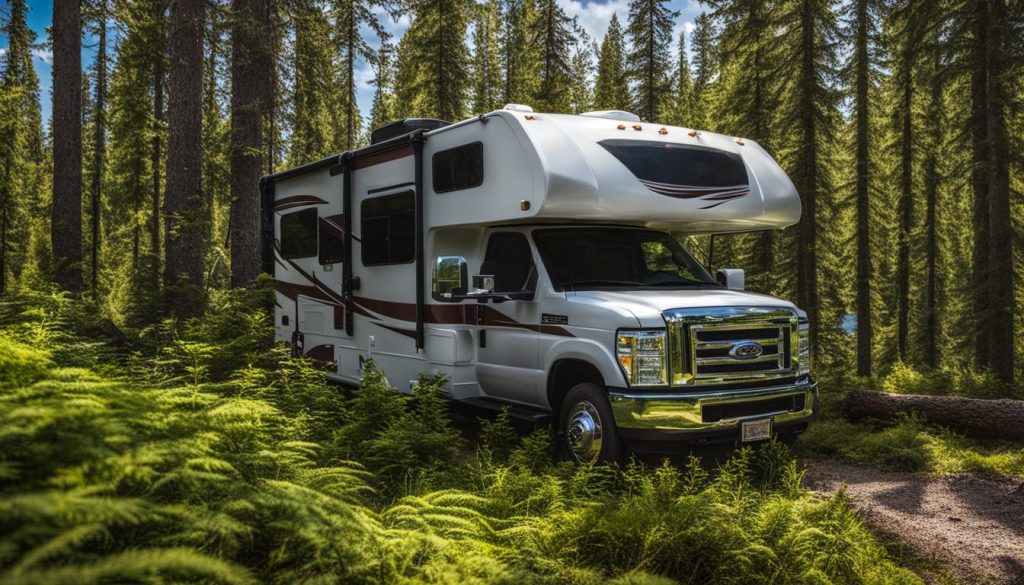
How to Choose the Best RV Antifreeze
When it comes to choosing the right RV antifreeze, there are a few key factors to consider. The type and brand of antifreeze play a crucial role in ensuring the protection and longevity of your RV’s plumbing system. By selecting the best antifreeze for your needs, you can safeguard your RV from freezing temperatures and potential damage.
Type of RV Antifreeze:
Propylene glycol-based antifreeze is the most common and recommended type for RVs. This type of antifreeze is non-toxic and safe for your RV’s plumbing system, making it an ideal choice. It also has minimal taste and smell, ensuring that your water remains clean and fresh. It’s important to avoid recycled or contaminated propylene glycol antifreeze, as it may contain harmful chemicals that could compromise your RV’s plumbing system and your health.
Popular Brands:
There are several reputable brands that offer high-quality RV antifreeze. Walmart’s Super Tech RV antifreeze and Walmart’s Marine Antifreeze are known for their reliability and effectiveness. Another trusted brand in the RV industry is Camco, with their Easy Going 50 antifreeze offering excellent protection for your RV. These brands have a proven track record and are widely used by RV enthusiasts.
| Brand | Type | Features |
|---|---|---|
| Walmart’s Super Tech RV | Propylene Glycol-based | – Non-toxic – Minimal taste and smell – Reliable winter protection |
| Walmart’s Marine Antifreeze | Propylene Glycol-based | – Safe for plumbing systems – Protects against freezing – Easy to use |
| Camco’s Easy Going 50 | Propylene Glycol-based | – Non-toxic – Can be used in drinking water systems – Provides superior freeze protection |
It’s essential to follow the manufacturer’s guidelines when using RV antifreeze and to use the appropriate amount based on the size of your RV. This will ensure that you provide adequate protection for your plumbing system throughout the winter months. By choosing the best RV antifreeze, you can have peace of mind knowing that your RV is well-prepared for the colder temperatures.
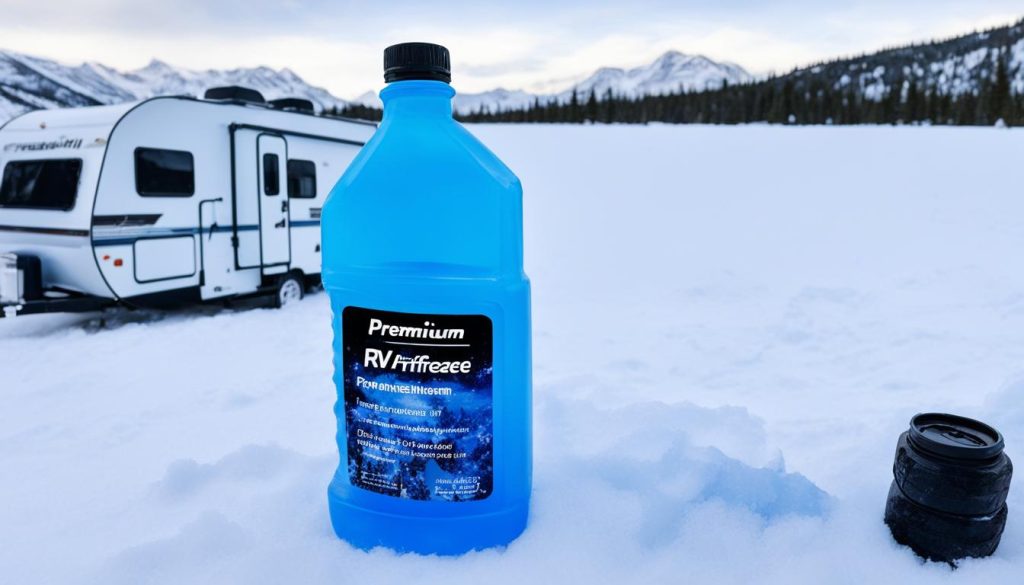
How to Winterize with RV Antifreeze
Winterizing your RV with antifreeze is an essential step to protect your plumbing system during the colder months. By replacing water with antifreeze, you can prevent freezing and potential damage to your RV’s pipes. Here’s a step-by-step guide on how to winterize with RV antifreeze.
- Prepare your RV: Before you begin the winterization process, make sure your RV is fully prepared. This includes draining the water heater, emptying the holding tanks, and disconnecting any outside water sources.
- Bypass the water heater: Most RVs have a bypass valve that allows you to bypass the water heater during the winterization process. This prevents antifreeze from flowing into the water heater and saves you from using excessive amounts of antifreeze.
- Use a T-valve or water pump bypass: To pump antifreeze into your plumbing system, you’ll need to either use a T-valve or a water pump bypass. The T-valve diverts the flow of water from the water tank to the antifreeze, while a water pump bypass allows you to draw antifreeze directly from a container.
- Pump antifreeze through the system: With the T-valve or water pump bypass in place, turn on the water pump and start pumping antifreeze through the plumbing system. Begin with the faucets closest to the water pump and work your way through each faucet, shower, toilet, and outdoor shower. Make sure to run both hot and cold water until you see a steady flow of antifreeze.
- Fill the P-traps: To prevent any remaining water in the P-traps from freezing, pour antifreeze down sinks, toilets, and other drains. This will ensure that there is enough antifreeze in the system to protect against freezing temperatures.
- Add antifreeze to the tanks: It is also recommended to add antifreeze to the gray and black tanks to prevent waste from freezing. This can be done by pouring antifreeze directly into the tanks through the toilet or using a specific antifreeze flush solution.
Following these steps will help you properly winterize your RV using antifreeze, ensuring that your plumbing system remains protected throughout the winter months.
How to De-Winterize an RV
De-winterizing your RV is an important step in getting it ready for regular use. This process involves flushing out the antifreeze from the plumbing system and ensuring your RV’s water system is clean and safe for use. Here’s a step-by-step guide on how to de-winterize your RV:
- Fill the Fresh Water Tank: Start by filling your RV’s fresh water tank with clean water. Ensure that the tank is properly sealed and secured.
- Turn on the Water Pump: Switch on the water pump to pressurize the system. This will help in flushing out any remaining antifreeze from the plumbing lines.
- Run Water Through Fixtures: Open all the faucets, showers, and toilets in your RV. Let the water run until you no longer see any traces of antifreeze, and the water is clear.
- Flush Outside Showers and Low-Point Drains: Don’t forget to open all the outside showers and low-point drains. This will ensure that any residual antifreeze is completely flushed out.
- Empty Gray and Black Tanks: Empty and flush the gray and black tanks until the water runs clear. This will remove any remaining antifreeze and waste from the tanks.
- Sanitize the Fresh Water System: After flushing out the antifreeze, it’s important to sanitize the fresh water system. You can use a bleach water mixture or vinegar to kill any bacteria or contaminants that may be present. Follow the instructions provided by the manufacturer for the proper dilution ratios and sanitization process.
Once you have completed these steps, your RV’s water system should be free from antifreeze and ready for use. Remember to always follow the manufacturer’s guidelines and instructions for de-winterizing your specific RV model.
Expert Tip:
Before de-winterizing your RV, make sure to check for any leaks or damage in the plumbing system. It’s also a good idea to run a water filter system to ensure the water you’re using in your RV is clean and safe.
To visually assist you with the de-winterization process, refer to the table below for a summary of the steps:
| Steps to De-Winterize an RV | Details |
|---|---|
| Fill the Fresh Water Tank | Ensure the tank is properly sealed and secured. |
| Turn on the Water Pump | Pressurize the system to flush out antifreeze. |
| Run Water Through Fixtures | Open faucets, showers, and toilets until water is clear. |
| Flush Outside Showers and Low-Point Drains | Ensure all antifreeze is flushed out. |
| Empty Gray and Black Tanks | Flush tanks until water runs clear. |
| Sanitize the Fresh Water System | Use bleach water mixture or vinegar to sanitize. |
By following these steps, you can successfully de-winterize your RV and prepare it for your upcoming adventures.
Proper Disposal of RV Antifreeze
Properly disposing of RV antifreeze is essential to protect the environment and prevent harm to plants and animals. It is crucial to never dump RV antifreeze on the ground, as it can seep into water sources and contaminate them. Instead, you should drain the antifreeze into a dump station, septic tank, or residential sewer clean-out.
If moving your RV isn’t possible, you can empty the antifreeze into a portable RV waste tank and transport it to an appropriate disposal location. Remember to handle RV antifreeze containers with caution to prevent spills and contamination. Store them in a cool, dry place until ready for disposal.
By following these proper disposal methods, you can help protect the environment and ensure the safe handling of RV antifreeze. With responsible disposal, you can enjoy the benefits of RV antifreeze while minimizing any negative impact on the ecosystem.
FAQ
What is RV antifreeze?
RV antifreeze is a liquid used to protect the plumbing system of an RV from freezing temperatures. It has a lower freezing point than water, preventing the water in the plumbing lines from expanding and potentially bursting.
What are the uses of RV antifreeze?
RV antifreeze is essential for winterizing an RV and protecting the plumbing during the colder months. It is also used to replace the water in the RV’s plumbing lines to prevent freezing, expanding, and potential damage to the pipes.
What is the difference between ethanol-based and propylene glycol-based RV antifreeze?
Ethanol-based antifreeze is cheaper, but propylene glycol-based antifreeze is more popular and preferred due to being non-toxic, safer, and providing better protection for the plumbing system.
Is RV antifreeze toxic?
RV antifreeze is generally non-toxic and safe for RV plumbing systems and holding tanks. However, it can be toxic to animals, especially cats, if consumed in large quantities.
How do I choose the right RV antifreeze?
When choosing RV antifreeze, it is important to consider the type and brand. The most common and recommended type is propylene glycol-based, as it is non-toxic, safe for the plumbing system, and leaves minimal taste or smell.
How do I winterize my RV with antifreeze?
Winterizing an RV with antifreeze involves adding it to the plumbing system to replace water and protect against freezing temperatures. It is important to follow the specific instructions for your RV model and use the appropriate amount of antifreeze based on its size.
How do I de-winterize my RV?
De-winterizing an RV involves flushing out the antifreeze from the plumbing system and preparing it for regular use. This process includes filling the fresh water tank with clean water, turning on the water pump, and running water through all fixtures until clear water comes out.
How do I properly dispose of RV antifreeze?
RV antifreeze should never be dumped on the ground. It should be drained into a dump station, septic tank, or residential sewer clean-out. Antifreeze containers should be stored properly and handled with caution to prevent spills and contamination.


